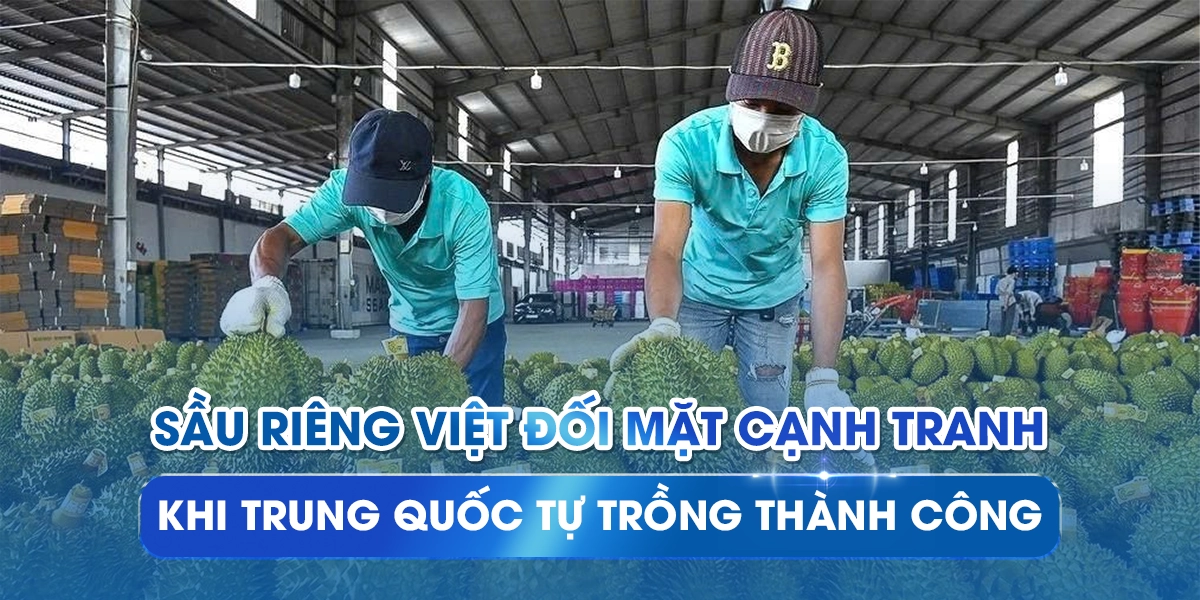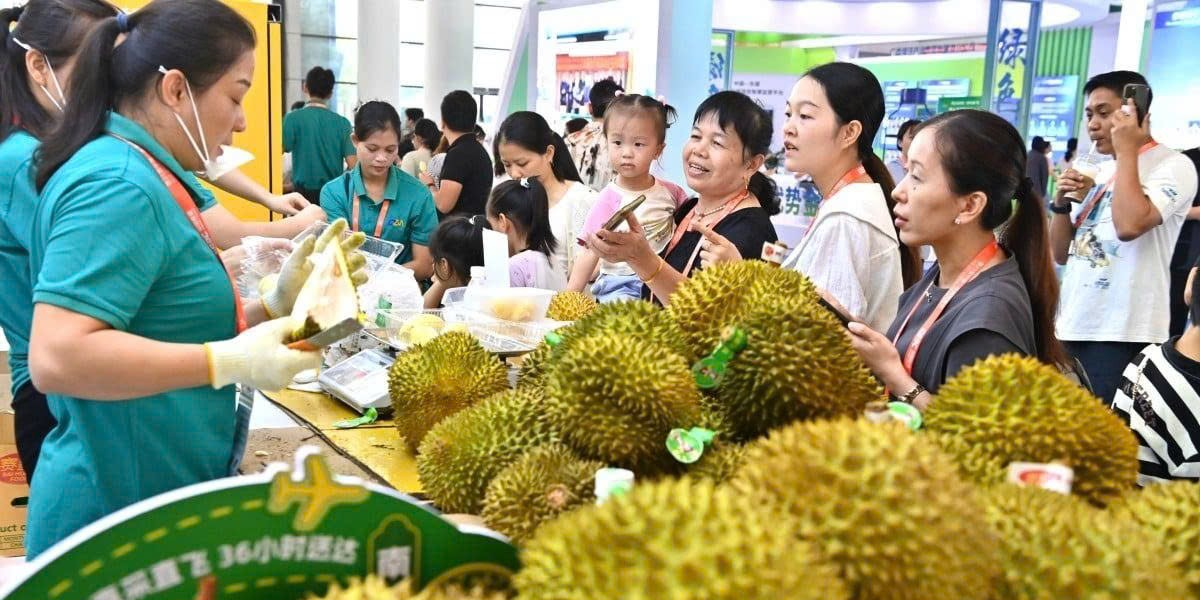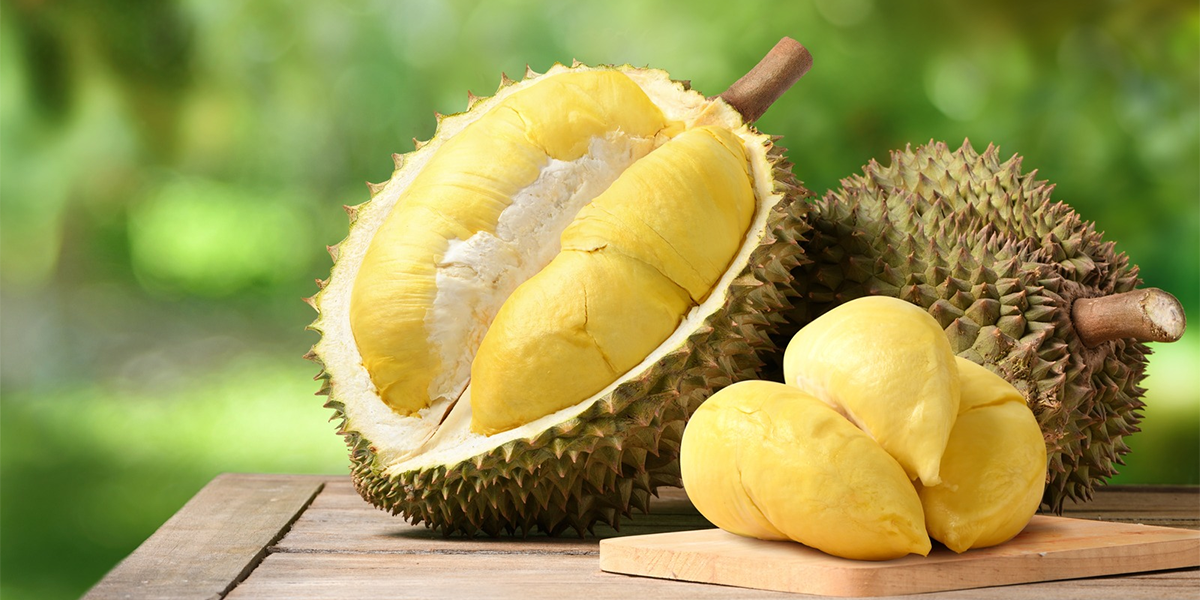VIETNAMESE DURIANS FACE COMPETITION AS CHINA SUCCESSFULLY CULTIVATES ITS OWN
29 Oct 2025

Will Vietnamese durians lose their advantage as China successfully cultivates them in Hainan? Let’s explore the opportunities and challenges for Vietnamese durians in the billion-people market.
How will Vietnamese durians face competition as China successfully cultivates its own?
China has just harvested its first 2,000 tons of durians on Hainan Island, marking a significant step toward self-sufficiency in domestic supply. However, experts note that the limited output and high prices mean Chinese-grown durians are not yet able to compete with Vietnamese durians, which offer better quality and more affordable prices.
Over the past five years, the durian cultivation area in Hainan has expanded from 700 hectares to more than 2,600 hectares, growing at an annual rate of around 30%. However, harsh weather conditions, frequent typhoons, and high production costs have made it difficult to maintain stable yields.
China’s domestic durian output remains limited, posing little impact on Vietnamese exports
Currently, each kilogram of Chinese-grown durian costs around 100 yuan (approximately 340,000 VND) - double or even triple the price of Vietnamese durians exported to China, which range from 90,000 to 150,000 VND per kilogram.
According to Mr. Dang Phuc Nguyen, General Secretary of the Vietnam Fruit and Vegetable Association, the production volume in Hainan remains far too low to put pressure on imported supplies. Even if China maximizes its cultivation area, domestic output will still be unable to meet the enormous consumption demand of a country with over 1.4 billion people.
Moreover, high labor, operational, and technological costs make Chinese durians less competitive in terms of price. Meanwhile, Vietnamese durians benefit from natural climatic advantages, lower production costs, and distinctive flavor - factors that make them highly appealing to consumers.

Durians on display at a market in China. Photo: Internet
Vietnam continues to maintain its competitive advantage in the Chinese market
In 2024, China imported nearly 7 billion USD worth of durians, with Vietnam accounting for about 40% (2.94 billion USD). This figure highlights that Vietnamese durians still hold a large and stable market share.
Experts predict that with high productivity and improving quality, Vietnamese durians will continue to dominate the market for at least the next decade. According to Mr. Nguyen Dinh Tung, CEO of Vina T&T, China’s domestic durian production is equivalent to only about 80 containers of Vietnamese durians - far too small to affect regional prices or supply.
Meanwhile, Vietnam is strengthening official durian exports, investing in standardized cultivation areas, quality control, and traceability systems. This sustainable direction helps Vietnam maintain its strong position amid growing competition..
Enhancing quality - The key to maintaining Vietnam’s durian dominance
Vietnam’s Ministry of Agriculture and Environment has issued Decision No. 3015, establishing a dedicated food safety control process for durian exports. Thanks to this regulation, the quality and reputation of Vietnamese durians have been significantly enhanced.
Vietnamese durian shipments now meet standards equivalent to those of Thailand, while still maintaining a price advantage. Thai durians - particularly the Monthong variety - hold strong branding and logistics advantages but are priced higher (160,000–200,000 VND/kg). This creates an opportunity for Vietnamese durians to expand market share, especially in the mid-range segment.
The Vietnam Fruit and Vegetable Association recommends that farmers and enterprises continue investing in VietGAP and GlobalGAP-certified growing areas, while also building a national brand for Vietnamese durians to strengthen their long-term competitiveness.

High-quality Vietnamese durians. Photo: Internet
Vietnam’s durian export value rises sharply
Since early 2025, Vietnam’s durian exports have shown continuous monthly growth. While export turnover was below 100 million USD per month during the first three months of the year, it surpassed this mark in April, doubled in May, reached 300 million USD in June, and climbed to 350–400 million USD in July.
In total, during the first seven months of 2025, Vietnam’s durian export value exceeded 1 billion USD, affirming the strong global rise of Vietnamese agricultural products.
Conclusion
Although China has successfully cultivated durians in Hainan, Vietnamese durians continue to maintain their strong position thanks to stable quality, competitive prices, and large supply capacity. For at least the next 5 to 10 years, Vietnamese durians will remain the main supplier to the Chinese market.
Investing in standardized growing areas, brand building, and quality enhancement will be the key for Vietnamese durians not only to stay resilient but also to rise as a leading regional brand in the future.
Views
275
